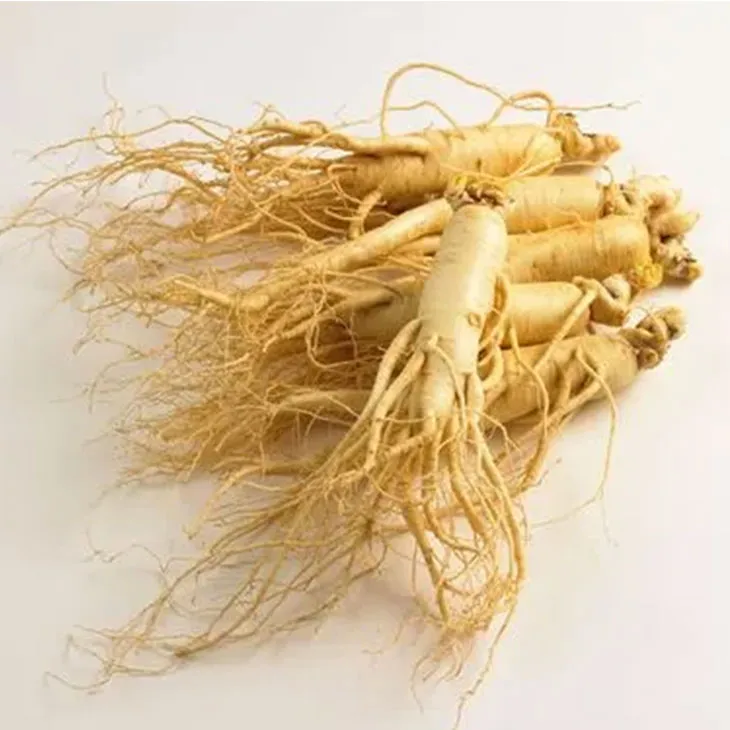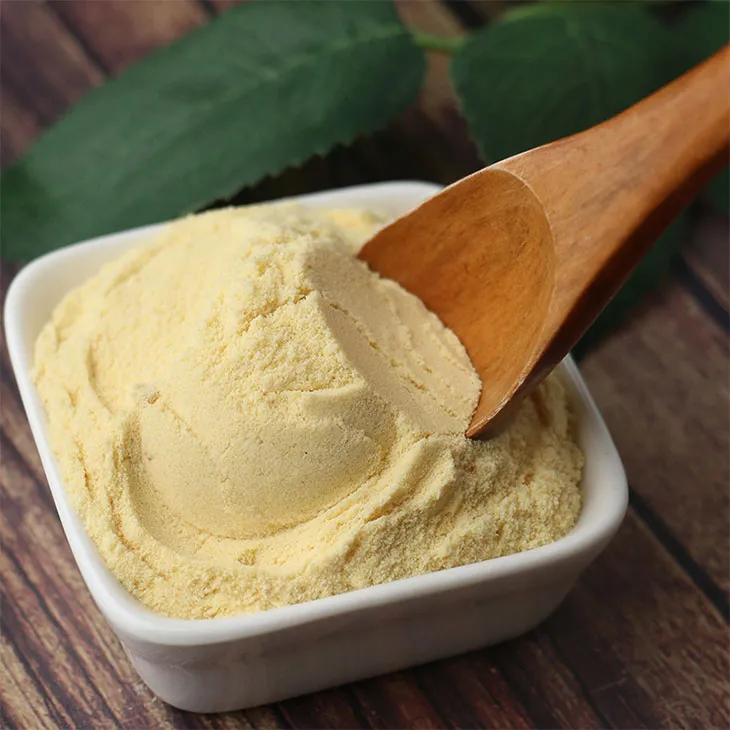- 0086-571-85302990
- sales@greenskybio.com
How to Extract American Ginseng Root Extract from Plants.
2024-11-29

1. Introduction
American ginseng (Panax quinquefolius) has been highly valued in traditional and modern pharmacology for its various health - promoting properties. Extracting its root extract is a complex process that requires careful consideration of multiple factors. This article will delve into the details of how to obtain high - quality American Ginseng Root Extract, starting from the plant source and sustainable harvesting, to the extraction methods and factors influencing the final product.

2. Plant Source
The Origin and Characteristics of American Ginseng
American ginseng is native to North America. It typically grows in deciduous forests with rich, well - drained soil. The plant has a characteristic appearance, with a single, branched root and compound leaves with five leaflets. Understanding the natural habitat and growth characteristics of American ginseng is crucial for sourcing high - quality plants for extraction.
Wild vs. Cultivated American Ginseng
Wild American ginseng has been a target of over - harvesting in the past, leading to concerns about its conservation. While wild - harvested ginseng may be considered more "authentic" by some, cultivated American ginseng has become a more sustainable alternative. Cultivated ginseng can be carefully managed in terms of soil quality, watering, and pest control, ensuring a more consistent supply of raw material for extraction.

3. Sustainable Harvesting
The Importance of Sustainable Harvesting
Sustainable harvesting is essential to ensure the long - term availability of American ginseng. Over - harvesting can lead to the depletion of wild populations, which not only affects the species itself but also the ecosystems it is part of. By following sustainable practices, we can protect the plant while still being able to obtain its valuable root extract.
Regulations and Guidelines
There are strict regulations governing the harvesting of American ginseng, both for wild and cultivated varieties. These regulations often include restrictions on the harvesting season, the minimum age of the plants to be harvested, and the quantity that can be harvested. For example, in many areas, wild American ginseng can only be harvested during a specific time period, usually in the fall when the plant has stored sufficient nutrients in its root.

4. Extraction Methods
4.1 Maceration
The Principle of Maceration
Maceration is a simple and traditional extraction method. It involves soaking the American ginseng root in a solvent, usually ethanol or water, for an extended period. The solvent penetrates the root tissue, dissolving the active compounds. During this process, the root material is typically coarsely ground or chopped to increase the surface area exposed to the solvent.
Steps of Maceration
- Prepare the American ginseng root by cleaning it thoroughly to remove dirt and debris.
- Coarsely chop or grind the root into small pieces.
- Place the root pieces in a suitable container and add the solvent (e.g., ethanol or water). The ratio of root to solvent can vary depending on the desired concentration of the extract, but a common ratio is 1:5 (root:solvent).
- Seal the container and let it stand at room temperature for a period of time, usually several days to weeks. Stir the mixture occasionally to ensure uniform extraction.
- After the maceration period, filter the mixture to separate the liquid extract from the solid root residue.
4.2 Percolation
The Principle of Percolation
Percolation is a more dynamic extraction method compared to maceration. In percolation, the solvent is continuously passed through the American ginseng root bed. This allows for a more efficient extraction as fresh solvent is constantly in contact with the root material, facilitating the dissolution of the active compounds.
Steps of Percolation
- Prepare the American ginseng root as in the maceration process, cleaning and chopping it into suitable pieces.
- Pack the root pieces into a percolator, which is a special container designed for percolation. The root should be packed evenly to ensure proper flow of the solvent.
- Slowly pour the solvent (e.g., ethanol or a water - ethanol mixture) onto the top of the root bed. The solvent will gradually percolate through the root, dissolving the active compounds as it passes through.
- Collect the percolate (the liquid that has passed through the root) in a container below the percolator. The percolation process can be continued until the desired amount of extract has been obtained or until the percolate no longer contains significant amounts of active compounds (as determined by analytical methods).
4.3 Distillation
The Principle of Distillation
Distillation is often used as a secondary step in the extraction process, especially when the solvent used is ethanol or another volatile solvent. The purpose of distillation is to separate the solvent from the extract, leaving behind a more concentrated form of the American Ginseng Root Extract. During distillation, the mixture of solvent and extract is heated, and the solvent vaporizes and is then condensed and collected separately.
Steps of Distillation
- Transfer the extract obtained from either maceration or percolation (which is in a solvent - extract mixture) to a distillation apparatus.
- Heat the mixture gently. As the temperature rises, the solvent will start to vaporize.
- The vaporized solvent is then passed through a condenser, where it cools and condenses back into a liquid. This condensed solvent is collected in a separate container.
- What remains in the distillation flask is the more concentrated American Ginseng Root Extract.

5. Factors Influencing Yield and Quality of the Extract
The Quality of the Plant Material
The quality of the American ginseng root used for extraction is a primary factor. Roots that are older, from healthy plants, and properly harvested are likely to yield higher - quality extracts. For example, roots that have been damaged during harvesting or have been affected by pests or diseases may contain lower levels of active compounds.
Solvent Selection
The choice of solvent can significantly impact the extraction. Ethanol is a commonly used solvent as it can dissolve a wide range of active compounds in American ginseng. However, water can also be used, especially for extracting water - soluble compounds. The solubility of different compounds in different solvents determines which solvent or solvent mixture is most suitable for obtaining a comprehensive extract.
Extraction Time and Temperature
Both extraction time and temperature play important roles. Longer extraction times generally lead to higher yields, but there is a limit beyond which further extraction may not significantly increase the yield and may even degrade the quality of the extract. Similarly, higher temperatures can speed up the extraction process, but excessive heat can also cause the degradation of heat - sensitive active compounds.
6. Role in Traditional and Modern Pharmacology
Traditional Pharmacology
In traditional Chinese medicine and Native American medicine, American ginseng has been used for centuries. It is believed to have adaptogenic properties, helping the body to adapt to stress. It has also been used to improve energy levels, enhance cognitive function, and boost the immune system. The root extract was often prepared as a decoction or tincture and used to treat various ailments.
Modern Pharmacology
Modern scientific research has identified several active compounds in American ginseng, such as ginsenosides. These compounds have been studied for their potential anti - inflammatory, antioxidant, and anti - diabetic properties. American Ginseng Root Extract is now being incorporated into various modern pharmaceutical products and dietary supplements, with the aim of providing health benefits based on its traditional uses and modern scientific understanding.
7. Conclusion
Extracting American Ginseng Root Extract is a multi - faceted process that involves careful consideration of the plant source, sustainable harvesting, extraction methods, and factors influencing the final product. By following proper procedures and taking into account all these aspects, it is possible to obtain high - quality American Ginseng Root Extract that can be used in both traditional and modern applications for the benefit of human health.
FAQ:
Q1: What is the ideal plant source for American ginseng root extract?
The ideal plant source for American ginseng root extract is Panax quinquefolius. It should be of a certain age, usually around 3 - 5 years old for optimal ginsenoside content. High - quality plants are typically grown in suitable habitats with proper soil, sunlight, and moisture conditions. For example, in some regions of North America, the natural environment provides the right conditions for its growth.
Q2: Why is sustainable harvesting important for American ginseng?
Sustainable harvesting of American ginseng is crucial for several reasons. Firstly, it ensures the long - term survival of the plant species. Over - harvesting can lead to a significant decline in its population. Secondly, it helps maintain the ecological balance in its native habitats. American ginseng plays a role in the ecosystem, and its removal without proper management can disrupt the food chain and other ecological relationships. Moreover, sustainable harvesting also guarantees a continuous supply of high - quality American ginseng root for extract production in the future.
Q3: Can you briefly explain the maceration method for extracting American ginseng root extract?
The maceration method involves soaking the American ginseng roots in a suitable solvent, such as ethanol or water. The roots are finely chopped or powdered and placed in a closed container with the solvent. This mixture is then left to stand for a period of time, usually several days to weeks. During this time, the active compounds in the roots gradually dissolve into the solvent. The resulting solution is then filtered to remove the solid plant material, leaving behind a liquid extract rich in the desired compounds.
Q4: What are the main factors influencing the yield of American ginseng root extract?
Several factors influence the yield of American ginseng root extract. The age and quality of the plant are important; older plants with a higher content of active compounds generally yield more extract. The extraction method used also plays a role. For example, the choice of solvent, extraction time, and temperature can all affect the amount of extract obtained. Additionally, the particle size of the ground roots can impact extraction efficiency. Finer particles usually result in a higher yield as they expose more surface area for the solvent to interact with the plant material.
Q5: How does American ginseng root extract contribute to modern pharmacology?
American ginseng root extract has several contributions to modern pharmacology. It contains ginsenosides, which have been studied for their potential antioxidant, anti - inflammatory, and immunomodulatory effects. These properties may be beneficial in the treatment of various conditions, such as chronic fatigue, stress - related disorders, and some immune - related diseases. Additionally, research is ongoing to explore its potential role in improving cognitive function and cardiovascular health.
Related literature
- The Pharmacology of American Ginseng: A Review of its Medicinal Properties"
- "Extraction Techniques for Herbal Medicinal Plants: Focus on American Ginseng"
- "Sustainable Harvesting of American Ginseng: Best Practices and Future Outlook"
- ▶ Hesperidin
- ▶ Citrus Bioflavonoids
- ▶ Plant Extract
- ▶ lycopene
- ▶ Diosmin
- ▶ Grape seed extract
- ▶ Sea buckthorn Juice Powder
- ▶ Fruit Juice Powder
- ▶ Hops Extract
- ▶ Artichoke Extract
- ▶ Mushroom extract
- ▶ Astaxanthin
- ▶ Green Tea Extract
- ▶ Curcumin
- ▶ Horse Chestnut Extract
- ▶ Other Product
- ▶ Boswellia Serrata Extract
- ▶ Resveratrol
- ▶ Marigold Extract
- ▶ Grape Leaf Extract
- ▶ New Product
- ▶ Aminolevulinic acid
- ▶ Cranberry Extract
- ▶ Red Yeast Rice
- ▶ Red Wine Extract
-
Purple Sweet Potato Extract
2024-11-29
-
Rosemary extract
2024-11-29
-
Sea buckthorn oil
2024-11-29
-
Grape Leaf Extract
2024-11-29
-
Beetroot juice Powder
2024-11-29
-
Mangosteen extract powder
2024-11-29
-
Nettle Root Extract
2024-11-29
-
Black Pepper Extract
2024-11-29
-
Okra Extract
2024-11-29
-
Red Date Extract
2024-11-29





















